The animal kingdom has amazed us in many ways for centuries. I’ll ask you a simple question. Do all animals have red blood like humans? The answer is simply no. There are a lot of animals with different colored blood, like blue, yellow, purple, etc.
Several respiratory pigments determine these blood colors. In this article, we will discuss animals with different blood colors. So here is the list of 20 mind-blowing animals with distinct colored blood. So let’s start this colorful journey.
20 Animals With Different Colored Blood
1. Sea cucumber
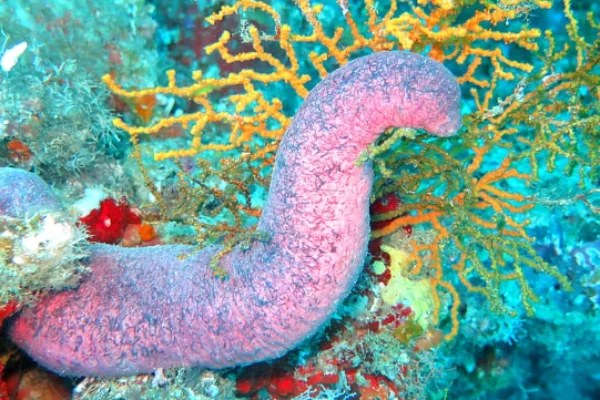
| Genus | Holothuria |
| Size | 10–30 cm |
| Body color | red, black, blue, green, or brown |
| Blood Color | yellow |
| Geographical location | Worldwide |
As their name indicates, sea cucumbers are called so because of their cucumber-shaped bodies. Their whole body has tube feet, which they use for locomotion and feeding.
They vary in size from 10 to 30 cm. Their blood color is yellow due to the presence of vanadium-containing pigment. These scavenger animals are found all around the world in different colors.
2. Peanut worms

| Class | Sipuncula |
| Size | 2 to 720 mm |
| Body color | gray or brown |
| Blood Color | Purple |
| Geographical location | throughout the world in deep waters |
Spiuncula or peanut worms are a class of marine unsegmented worms. they are known for their long, cylindrical body with extensive introvert or proboscis.
It has an average size of 2 to 720 mm. Let’s talk about their blood color. Their blood is purple in color due to the presence of a protein called hemeerythrin. They are simple body plans with no segmentation or respiratory organs.
3. Bristle worms
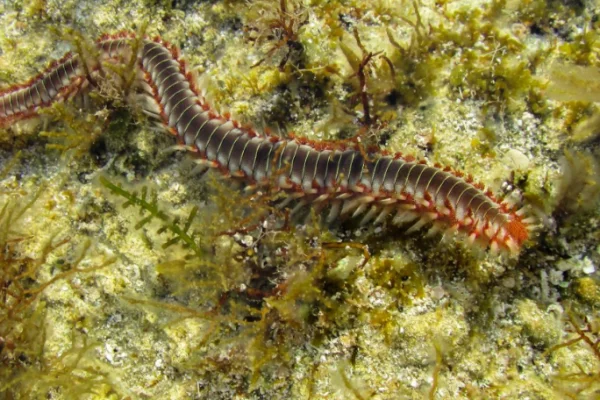
| Class | Polychaeta |
| Size | 1mm to 3m |
| Body color | Pink, Tan, Red, Yellow, Brown, Dark Green, and Black |
| Blood Color | Purple |
| Geographical location | throughout the Earth’s oceans at all depths |
Polychaeta, or bristle worms, are called so due to the presence of hair-like structures called bristles or setae. They vary in size and color, from 1 mm to 3 m, and occur in many color forms, like pink, tan, red, yellow, brown, dark green, and black.
They have well-developed heads with eyes, antennae, and tentacles. Their blood color is also purple, like peanut worms. These marine creatures occur in all parts of the world and at all depths.
4. Sea squirts

| Class |
Ascidiacea
|
| Size | 0.5 to 10 cm |
| Body color | Clear or brightly colored, usually red, brown, or yellow but sometimes blue |
| Blood Color | Yellow |
| Geographical location | In all seas |
The next animal on our list is a sea squirt. They are known for their unique yellow color due to the presence of a vanadium-rich pigment called vanabin. These cylindrical animals vary in size from 0.5 to 10 cm.
They are not free-living, are always present in a group, and remain fixed to the substratum. They are known as tunicates as they have an outer hard covering called a tunic.
These hermaphrodite animals occur in many color forms, usually brightly colored, red, brown, or yellow, but sometimes blue.
5. Roly Polies
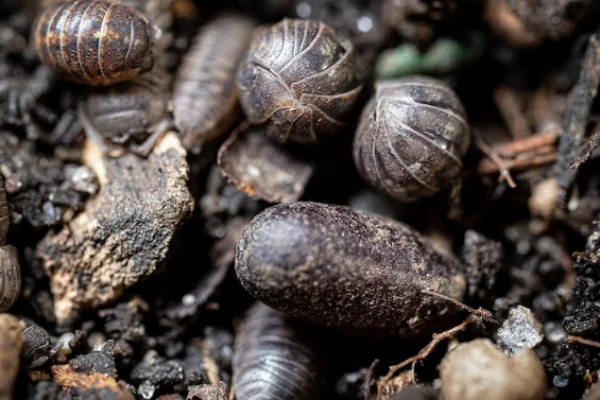
| Genus | Armadillidium |
| Size | 8.5 to18 mm |
| Body color | gray to brown |
| Blood Color | Blue |
| Geographical location | All around the world |
Armadillidium is a small crustacean known by many names like roly polys, pillbug, woodlice, or potato bugs. They are gray to brown with an average length of 8.5 to 18 mm. These nocturnal creatures primarily prefer humid or moist environments.
They have blue blood because the concentration of copper-containing pigment or hemocyanin is high. They occur in Europe, but now, after introduction to various areas of the world, they are cosmopolitan.
6. Cockroaches
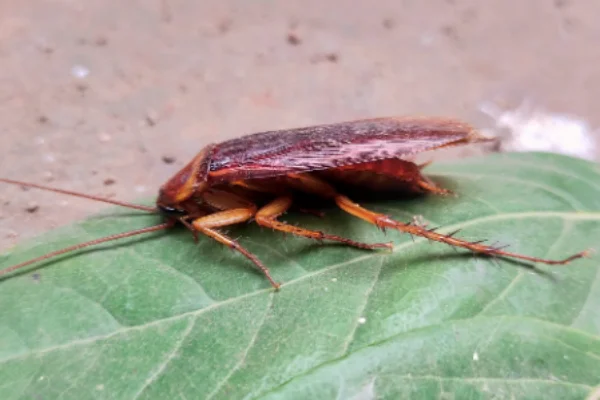
| Genus | Periplaneta |
| Size | 4 cm |
| Body color | dark reddish-brown |
| Blood Color | white |
| Geographical location | Throughout the world |
Cockroach or Periplaneta is the most common pest found across the world. These nocturnal animals are comparatively small with an average length of 4 cm. They are dark reddish brown and their body is divided into three regions; head, thorax, and abdomen.
They have wings but are not long-distance fliers. It contains hemolymph as its respiratory pigment which is pale or white in color. They generally prefer moist environments but can exist in all types of habitats.
7. Ocellated Icefish
| Scientific name | Chionodraco rastrospinosus |
| Size | 30 to 52 cm |
| Body color | Grayish, black, or brown bodies |
| Blood Color | White/ transparent |
| Geographical location | South Orkney, South Shetland Islands, Antarctic Peninsula, and the Weddell Sea |
The ocellated icefish is known for its white or transparent blood. They are found in Antarctica, from South Orkney, the South Shetland Islands, and the Antarctic Peninsula to the Weddell Sea at a depth of 1 km.
They vary in size from an average of 30 to 52 cm. These cold-water fish are usually grayish, with black or brown bodies. They mostly prefer krill to feed on.
8. New Guinea green-blooded skinks
| Scientific name | Prasinohaema virens |
| Size | 42.5–55.8 mm |
| Body color | Bright lime-green |
| Blood Color | green |
| Geographical location | New Guinea and the Solomon Islands. |
As the name indicates, New Guinea green-blooded skinks are known for their green blood. The most interesting thing about their blood is that they use hemoglobin for oxygen transport.
The green color of their blood is due to biliverdin, formed by the breakdown of hemoglobin. They are small, with size of 42.5 to 55.8 mm, and have remarkable bright lime green bodies.
9. Leeches
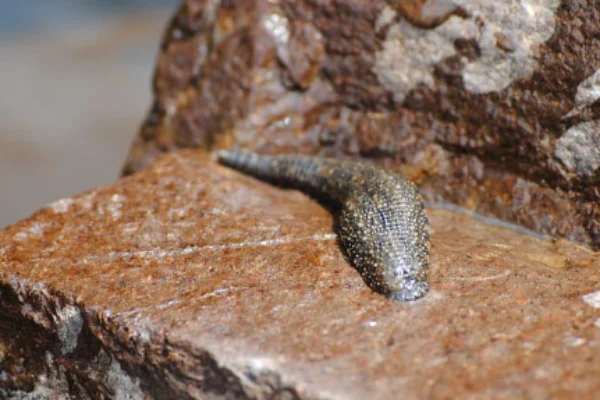
| Genus | Hirudinaria |
| Size | 10 to 15 cm long |
| Body color | Olive green to brown |
| Blood Color | Green |
| Geographical location | All continents and seas, except terrestrial Antarctica |
We have another green-colored blood segmented worm, i.e., Leeches. These ectoparasitic worms occur on all continents except Antarctica. This animal is commonly seen in the rainy season and prefers a moist environment.
They vary in size from 10 to 15 cm. They primarily feed on the blood of other animals. Their blood contains chlorocruorin, which is responsible for the green color.
10. Horseshoe crab
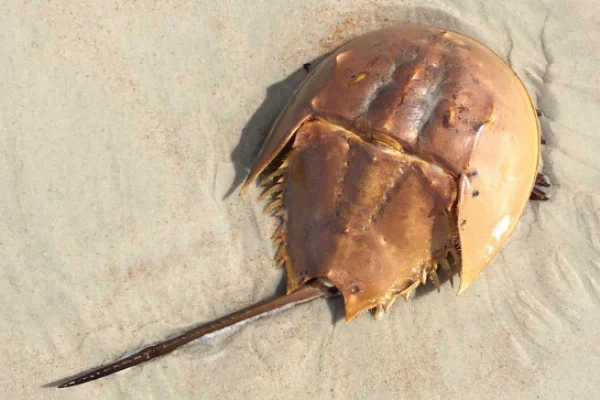
| Genus | Limulus |
| Size | 18 to 19 inches |
| Body color | Brownish-green |
| Blood Color | Light blue |
| Geographical location | North America and Southeast Asia. |
The horseshoe crab has light blue blood. It is because of the copper-containing pigment called hemocyanin. As the name horseshoe indicates, their head is large and u-shaped, which resembles the horseshoe.
Their blood has medicinal value. Their blood contains Limulus Amebocyte Lysate (LAL) Protein, which pharmaceutical companies use to manufacture drugs.
11. Pale Octopus
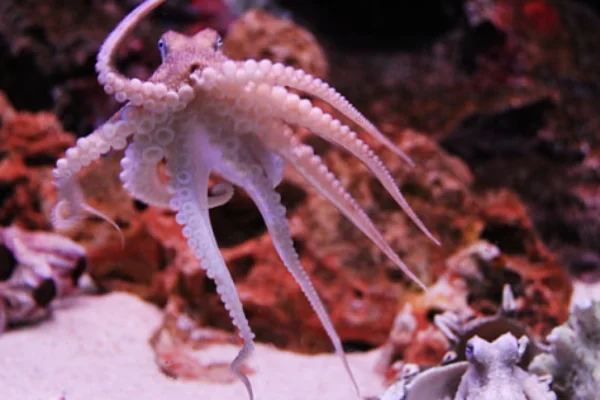
| Scientific name | Octopus pallidus |
| Size | 35 cm |
| Body color | pale yellowish-orange |
| Blood Color | Blue |
| Geographical location | Southeastern Australia |
The octopus also has blue blood. Here we take pale octopus, as its blood contains a high concentration of hemocyanin. These octopuses are pale yellowish orange in color and have a body size of 35 cm.
They are commonly found in southeastern Australia. Apart from their blue blood, their bodies have remarkable spikes all over the body.
12. Emperor Scorpion
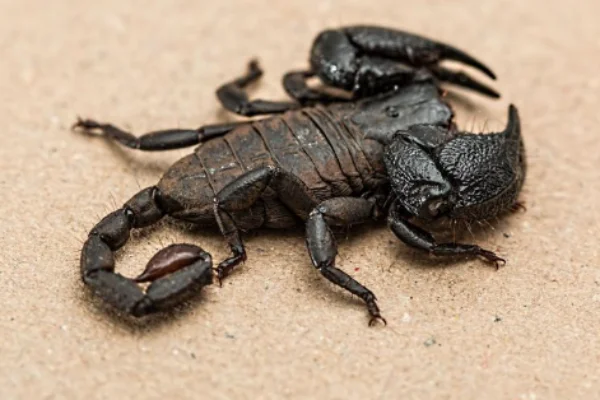
| Scientific name | Pandinus imperator |
| Size | 20 cm |
| Body color | Glossy black |
| Blood Color | blue |
| Geographical location | West Africa |
Some species of scorpions have blue-colored blood. In this list, we included Pandinus imperator or the Emperor Scorpion, as they contain high concentrations of hemocyanin.
They are beautiful, glossy black, with an average size of 20 cm. They mostly prefer the savannahs of West Africa.
13. Tobacco hornworm
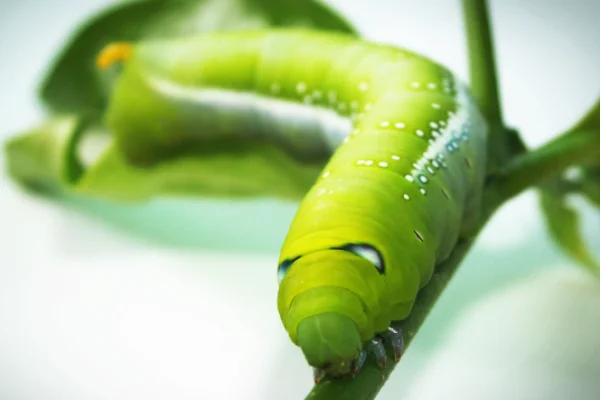
| Scientific name | Manduca sexta |
| Size | 80 mm |
| Body color | Bright green |
| Blood Color | Blue |
| Geographical location | North America |
The caterpillars of Manduca sexta are commonly known as tobacco hornworms due to their worm-like appearance and two posterior horns. They are often mistaken for tomato hornworms due to their similar appearance.
These beautiful, bright green-colored worms have blue-colored blood. They are medium-sized, with an average size of 80 mm, and occur in North America.
14. Earthworms

| Genus | Pheretima |
| Size | 150 mm |
| Body color | Brown |
| Blood Color | Red |
| Geographical location | Southeast Asia |
You must have seen an earthworm in your backyard after the rain, right? What’s their blood color? This question must come to your mind. Their blood is red, just like ours.
Their blood contains hemoglobin, which gives it a red color when oxygenated. These segmented worms are approximately 150 mm in length and are commonly found in Southeast Asia and New Guinea.
15. Spiders

| Class | Arachnida |
| Size | 0.5 to 90 mm |
| Body color | black, brown, or grey |
| Blood Color | blue |
| Geographical location | All around the world except in polar regions |
Spiders are fascinating animals with many distinctive characteristics. Do you know they also bleed blue? Yes, their blood is also blue like that of octopuses.
Their blood contains the copper-containing respiratory pigment hemocyanin, which turns blue when oxygenated. It gives spiders an advantage over infections caused by bacteria and fungi.
Spiders are common in nature, found all across the world except in polar regions, and available in many color forms like black, brown, or grey.
16. Penis worms
| Phylum | Priapulida |
| Size | 0.3 to 39 cm |
| Body color | Pinkish-brown color |
| Blood Color | purple |
| Geographical location | In all oceans |
Priapulida, or Penis worms, are unsegmented worms found in all oceans. They are cylindrical and resemble the shape of a human penis, and their sizes range from 0.3 to 39 cm.
Their blood color is purple, visible under their transparent skin, and gives them a pinkish-brown color. They don’t have well-developed sense organs; just some sense tentacles are present on their whole body, which provide them with information about their surroundings.
17. Squids
| Genus | Loligo |
| Size | 20 to 50 cm |
| Body color | usually a shade of pink, red, or brown |
| Blood Color | blue |
| Geographical location | Entire Pacific and Atlantic coast, China, India, and the U.S.A |
Loligo squid has many fascinating features, but one of the most intriguing is their blood. Their blood is blue due to the same reason: hemocyanin. Let’s talk about their appearance. Their length ranges from 20 to 50 cm, and they exist in many forms in different colors, like pink, red, or brown.
You can find these animals on the Pacific and Atlantic coasts in China, India, and the USA. They are famous among seafood eaters because of their delicious taste and high nutritional value.
18. Brachiopods
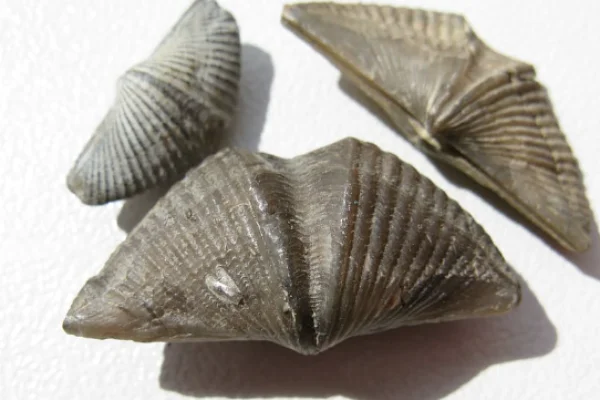
| Phylum | Brachiopoda |
| Size | 1 to 100 mm |
| Body color | Yellowish grey color |
| Blood Color | Black or purple |
| Geographical location | Arctic Ocean |
Brachiopods are also known as lamp shells because they resemble antique oil lamps. These marine animals are bivalves, which means their soft bodies are covered by two shells.
Their blood color is unique, i.e., black, which makes them an exciting organism to know about. Their blood contains a high concentration of hemeerythrin.
In some brachiopods, the concentration of these pigments is not that high and imparts a purple color. They are very ancient animals that have existed since the Cambrian period, about 540 million years ago.
19. Crayfish

| Genus | Cherax |
| Size | 5 to 6 inches |
| Body color | Olive green to brown to black |
| Blood Color | Blue |
| Geographical location | Australia |
We have another animal with blue blood on this list. Crayfish, or Cherax, are aquatic animals found in Australia. They are large, with a size range of 5 to 6 inches.
These freshwater crayfish can survive in dry conditions through aestivation. They are very colorful organisms and can be seen in olive green, brown, and black. These crayfish have a complex mating system that involves fighting, urine release, and mate choice.
This Australian delicacy is used for human consumption, especially in Australia, is loved by seafood lovers all across the world, and also has medicinal uses.
20. Grasshoppers
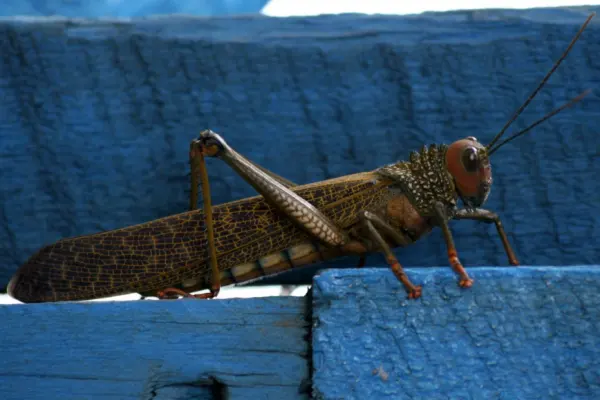
| Order | Orthoptera |
| Size | 1 to 7 cm |
| Body color | Depend on surroundings |
| Blood Color | white |
| Geographical location | on all continents except Antarctica |
We covered a lot of articles on different colors of grasshoppers. But have you ever wondered about their blood? Is it also of a different color? So the answer to these questions I will give you.
These beautiful groups of organisms possess hemolymph, just like beetles and cockroaches. This respiratory pigment is transparent and gives a pale white color when oxygenated.
Unlike their same blood color, their body color is different in different species according to their environment, and they are found all across the world on all continents except Antarctica. These organisms have a very special place in insect collections.
Conclusion
In conclusion, the blood color of animals depends on the different respiratory pigments like hemocyanin, vanadin, hemeerythin, etc. to which they adapted during evolution. They have some advantages over hemoglobin-containing blood and also some disadvantages.
They are amazing animals and must need appreciation. I hope you enjoyed reading this. We will be back soon with another article.
Also Read:

Being a zoology student I’m always been fascinated toward animals especially insects. I love to do research and learn about different animals. As a writer I want to share my thoughts about nature through my articles. Apart from this you can find me exploring the new places and voice notes.

